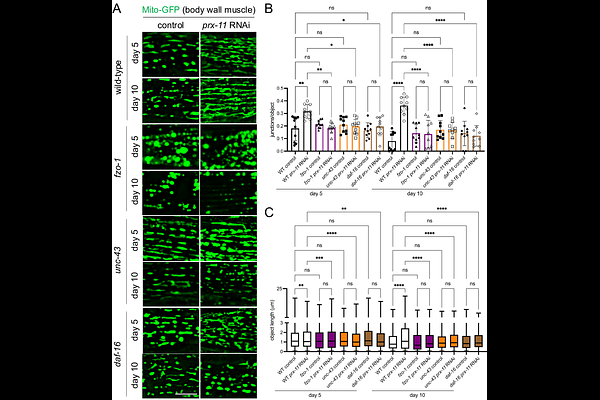Inhibition of peroxisomal protein PRX-11 promotes longevity in Caenorhabditis elegans via enhancements to mitochondria

Inhibition of peroxisomal protein PRX-11 promotes longevity in Caenorhabditis elegans via enhancements to mitochondria
Flora, Y.; Shastri, D.; Bohnert, K. A.
AbstractPeroxisomes execute essential functions in cells, including detoxification and lipid oxidation. Despite their centrality to cell biology, the relevance of peroxisomes to aging remains understudied. We recently reported that peroxisomes are degraded en masse via pexophagy during early aging in the nematode Caenorhabditis elegans, and we found that downregulating the peroxisome-fission protein PRX-11/PEX11 prevents this age-dependent pexophagy and extends lifespan. Here, we further investigated how prx-11 inhibition promotes longevity. Remarkably, we found that reducing peroxisome degradation with age led to concurrent improvements in another organelle: mitochondria. Animals lacking prx-11 function showed tubular, youthful mitochondria in older ages, and these enhancements required multiple factors involved in mitochondrial tubulation and biogenesis, including FZO-1/Mitofusin, UNC-43 protein kinase, and DAF-16/FOXO. Importantly, mutation of each of these factors negated lifespan extension in prx-11-defective animals, indicating that pexophagy inhibition promotes longevity only if mitochondrial health is co-maintained. Our data support a model in which peroxisomes and mitochondria track together with age and interdependently influence animal lifespan.